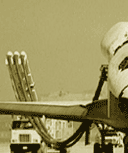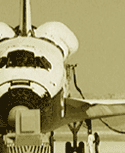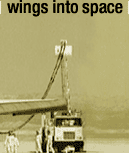








 |
|
||||||||
|
|
    |
||||||||
|
Even before human space travel became a reality on this same date in 1961 with the launch of cosmonaut Yuri Gagarin, space visionaries had conceptualized reusable winged vehicles that literally flew into space. Expanding upon the earlier work of people such as Max Valier and Eugen Sänger, in the 1950s and 1960s the Air Force developed the DynaSoar (for Dynamic Soaring) and several other programs involving a reusable piloted glider perched atop a large expendable launch vehicle. Also at this time, NASA researchers had done pioneering work in blunt body and lifting body aerodynamics that made the Shuttle possible. During the late 1960s, at the height of the Apollo program, NASA was simultaneously thinking about its next major human spaceflight efforts. In January 1972, President Nixon announced that NASA would begin a program to build a Space Transportation System (STS), more commonly known as the Space Shuttle. Thus, while the Shuttle development program formally took nine years, it represented the culmination of something much larger. Indeed, the successful launch of the first Shuttle mission demonstrated several cutting-edge technologies. Through its reusability, the Shuttle was also intended to provide low-cost, frequent access to space. Unfortunately, the Shuttle has never been able to fly often enough to bring launch costs significantly down. NASA continues to look at ways to improve the Shuttle and to explore new methods of repeatedly launching humans into space safely.
Updated
January 27, 2010 Designed
by Douglas Ortiz and edited by Lisa Jirousek |
|||||||